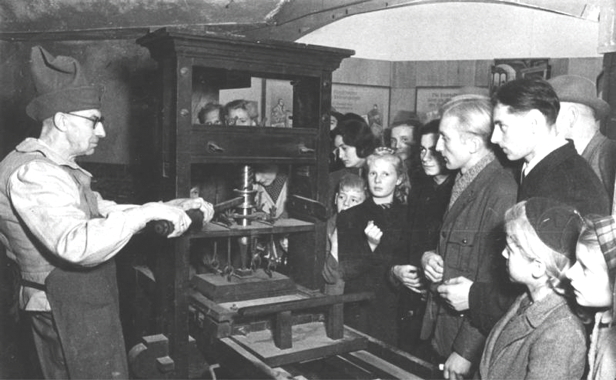Before 1440 only a few thousand handwritten texts existed across Europe. Inspired by the growing demand for lower cost books, Johannes Gutenberg, a German goldsmith, created the printing press – a faster form of semi-mechanical production that revolutionised the world.
Based on the same principles of the screw-type presses used to squash grapes in the Rhine Valley, Gutenberg fathomed a machine that applied pressure to an inked surface on text that rested upon a medium such as paper, thereby transferring an image or text. The machine first featured moveable wooden letters carved by hand, but the plucky inventor later developed an alloy from lead, tin and antimony that could be moulded precisely and quickly into long-lasting printing blocks. Handwritten tomes used water-based ink, but Gutenberg devised the creation of oil-based inks which stuck better to the metal types. These inky-surfaced type blocks were arranged into words and sentences and held by a wooden form, pressure was applied and the letters were pressed onto the surface of paper.
It is thought that the German produced hundreds of texts during his life, but his magnum opus is regarded as the Gutenberg Bible, the very first book to be published as a volume.

